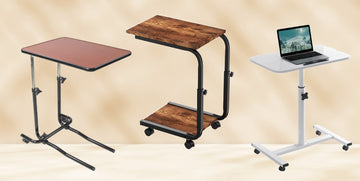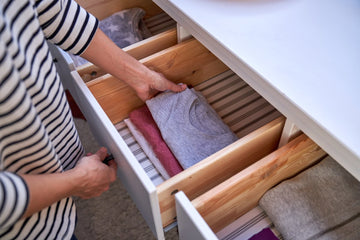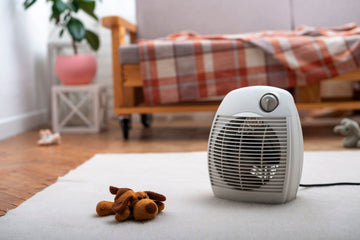Life at home is all about comfort and convenience. Whether you’re caring for an elderly family member, recovering from surgery, or simply looking for a smarter way to work from your sofa or bed, small details can make a big difference. One such detail is the overbed table—a simple piece of furniture that can transform everyday living.
Unlike regular bedside tables, overbed tables are designed to roll easily over beds or chairs, giving you a stable surface wherever you need it most. From serving meals and keeping medications close to holding a laptop for remote work, these tables offer both practicality and comfort in one neat design.
But with so many styles and price ranges available, finding the right one can feel overwhelming. That’s why it’s important to understand the different types, materials, and features before making a choice.
What Is an Overbed Table and Why Is It Useful?
An overbed table is a portable desk on wheels designed to slide neatly under a bed, sofa, or chair. The top surface hovers above your lap, making it easy to use for eating, reading, working, or storing essentials.
Overbed tables are most commonly seen in hospitals, but they’re becoming increasingly popular in homes, care facilities, and small apartments for their practicality.
Key Uses of Overbed Tables:
-
Patient Care – Meals, medicines, and personal items kept close at hand.
-
Elderly Support – Safe and stable for everyday tasks without bending or straining.
-
Work-from-Home – A compact rolling desk for laptops, books, or notepads.
-
Small-Space Living – Doubles as a side table or serving tray without taking up much space.

Benefits of Using an Overbed Table
Why are overbed tables so popular? Let’s explore their key benefits.
1. Improved Comfort for Patients and the Elderly
Overbed tables make it easier for patients or elderly individuals to eat, drink, read, or use a laptop without leaving the bed. This reduces unnecessary strain and promotes comfort during recovery or daily care.
2. Multi-Purpose Functionality
These tables aren’t just for hospitals. They double as:
-
Laptop desks for remote work.
-
Snack trays for watching movies in bed.
-
Craft stations for hobbies like drawing, knitting, or writing.
3. Mobility and Flexibility
With smooth-rolling wheels, overbed tables can be easily moved from one room to another. Lockable casters ensure the table stays in place when needed.
4. Space-Saving Design
Perfect for small apartments or dorms, an overbed table eliminates the need for bulky desks or side tables.
5. Enhanced Caregiving
Caregivers can place meals, medicines, or medical devices on the table, making care routines more organised and stress-free.

Types of Overbed Tables
Overbed tables come in different styles and designs, each offering unique features to suit specific needs. Whether you need one for patient care, elderly support, remote work, or casual home use, there is a model designed for you. Below are the most common types of overbed tables explained in detail:
1. Standard Overbed Tables
These are the most common models you’ll find in hospitals and nursing homes. They feature:
-
A flat rectangular tabletop for meals, books, or laptops.
-
Height adjustment using a simple lever or knob.
-
Rolling wheels for easy movement.
Best for: Patients in recovery, daily hospital use, and general home care.
2. Tilt-Top Overbed Tables
Tilt-top tables allow you to angle the tabletop up to 45 degrees or more.
-
Perfect for reading, sketching, or using a tablet without straining your neck.
-
Some models include a raised edge to prevent items from sliding off when tilted.
Best for: Book lovers, students, or anyone who spends time drawing or using a laptop in bed.
3. Split-Top Overbed Tables
A combination of a flat surface + tilt surface in one design.
-
One side stays flat for cups, food, or medical items.
-
The other side tilts for reading or working.
Best for: Multitaskers who want to eat and read, or work and write at the same time.
4. Rolling Laptop Desks
Sleek and compact, these tables are often marketed as portable laptop desks.
-
Slimmer design compared to medical-grade tables.
-
Lightweight, easy to move from bed to sofa.
-
Some models feature extra storage shelves.
Best for: Students, freelancers, or remote workers who need a mobile workstation.
5. Heavy-Duty Medical Overbed Tables
Designed specifically for hospitals and long-term patient care.
-
Built with reinforced steel frames.
-
Higher weight capacity for holding medical equipment or trays.
-
Often wider, with large tabletops for maximum utility.
Best for: Care facilities, patients with medical equipment, or long-term home care.

6. C-Shaped Overbed Tables
The base of these tables is shaped like the letter C, allowing the table to slide closer to the user.
-
Fits easily under beds, recliners, or sofas.
-
Space-saving design.
-
Often more stylish for home use.
Best for: Compact spaces, living rooms, and home offices.
7. U-Shaped Overbed Tables
The U-shaped design offers extra stability.
-
Provides more leg space for patients.
-
Stronger support for heavier items.
-
Some models include built-in cup holders or storage trays.
Best for: Wheelchair users, patients in rehab, or those who need more stability.
8. Overbed Tables with Storage
A growing trend in modern designs is built-in drawers or shelves.
-
Store books, remotes, or medical supplies.
-
Keeps essentials within reach.
Best for: Elderly users or anyone who likes keeping everything organised in one place.
9. Folding or Collapsible Overbed Tables
These tables can be folded flat when not in use.
-
Great for small apartments.
-
Easy to carry or store.
Best for: Occasional use, travel, or homes with limited space.
10. Multi-Purpose Overbed Tables with Extra Features
Some modern models go beyond the basics and include:
-
Cup holders, USB charging ports, and side pockets.
-
Ergonomic designs for laptops and tablets.
-
Stylish finishes like wood grain or glass tops.
Best for: Families who want a table for both comfort and productivity.
By knowing the different types of overbed tables, you can choose one that best matches your lifestyle, whether it’s patient care, working from home, or everyday convenience.
Top Uses of Overbed Tables
Overbed tables are versatile and can be used in multiple ways:
-
For Patients: Eating, drinking, and medicine storage.
-
For the Elderly: Easy access to books, phones, or crafts.
-
For Students: A rolling desk for online classes or study sessions.
-
For Remote Workers: A mobile workstation that can be moved from bed to sofa.
-
For Families: Breakfast-in-bed tray or movie snack station.
Maintenance Tips for Overbed Tables
To keep your overbed table in good condition:
-
Clean the surface regularly with mild soap and water.
-
Check the wheels and locks for smooth operation.
-
Avoid overloading beyond the weight limit.
-
Store indoors to prevent rust or damage.
Safety Tips When Using Overbed Tables
While overbed tables are safe, here are a few precautions:
-
Always lock the wheels before use.
-
Do not lean heavily on the table.
-
Place heavy items at the centre for balance.
-
For elderly or patients, caregivers should adjust the height.
Overbed Tables vs. Regular Side Tables
You may wonder: why not just use a regular side table?
-
Mobility: Overbed tables roll directly over the bed; side tables don’t.
-
Height Adjustment: Overbed tables are adjustable; side tables are fixed.
-
Functionality: Overbed tables can tilt and roll, making them more versatile.
Simply put, overbed tables are designed for convenience, mobility, and care needs—something side tables cannot match.
Best Places to Buy Overbed Tables
You can find high-quality overbed tables at:
-
Online marketplaces (Amazon, eBay, Walmart, Bestebuy UK)
-
Medical supply stores
-
Furniture outlets
For trusted information on energy-efficient and home care solutions, you may also want to check resources like the Energy Saving Trust for practical tips on improving daily comfort at home.
For more details on how different designs are used in hospitals and care homes, you can explore this comprehensive guide to overbed tables from Direct Supply.
FAQs About Overbed Tables
1. Are overbed tables only for hospitals?
No, overbed tables are widely used in homes, especially for elderly care, remote work, and small living spaces.
2. Can I use an overbed table as a laptop desk?
Yes! Many people use overbed tables as mobile laptop desks, perfect for working in bed or on the sofa.
3. Do overbed tables require assembly?
Most models require minimal assembly, and they usually come with clear instructions.
4. How much weight can an overbed table hold?
It depends on the model, but most can safely hold 10–40 pounds. Heavy-duty tables can support even more.
5. Are overbed tables safe for elderly people?
Yes, they are safe and highly recommended. Just ensure the wheels are locked and the height is adjusted correctly.
6. Can children use overbed tables?
Absolutely! Kids can use them for homework, crafts, or snacks, as long as they are supervised.
7. What is the average price of an overbed table?
Prices range from $40 to $150, depending on size, materials, and features.
8. How do I clean an overbed table?
Wipe the surface with a damp cloth and mild soap. Avoid harsh chemicals that may damage the finish.
Conclusion
An overbed table with wheels isn’t just hospital furniture. It’s useful movable furniture for space-constrained modern living. It can be helpful when you are looking after a patient or elderly family members, for a portable mobile desk to improve their modern living.
They come in many options to choose from; in addition to the height-adjusting overbed table, you can select from several rolling caster combinations. With the proper selection, you can enjoy a dependable overbed table as a versatile bed and desk surface. It can provide value for both care and lifestyle.
Invest in the best overbed table today and experience how this simple piece of furniture can bring comfort, flexibility, and functionality into your home.





